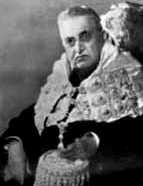

After completing his mission as rector of the Carmo secondary school in 1902, JMR chose to settle in Lisbon, where he devoted himself to teaching Latin philology at the Higher School of Letters. The ties that continued to bind him to the Faculdade de Teologia [School of Theology] were severed on 19 April 1911, under the Republic, when the school was closed and the Faculdade de Letras da Universidade de Coimbra [School of Arts of the University of Coimbra], then newly created, sought to absorb its teaching staff. JMR preferred to follow the metamorphosis of the Higher Course in Arts and Humanities, becoming, in June 1911, a professor at the also new Faculdade de Letras da Universidade de Lisboa [School of Arts and Humanities of the University of Lisbon]. He would retire there as a professor in October 1927. The relationships he established and the recognition he received are evidenced by the title of Doctor Honoris Causa, awarded by the University of Coimbra, and the decoration as Grand Officer of the Order of Instruction, both in 1922. No less eloquent is his connection to guilds and academies: for example, the Barbosa Machado Society of Bibliophiles and the Academy of Sciences, where he was a full member of the History section and, between 1925 and 1927, president of the Literature class. During these decades, his bibliographical output was copious, in which three areas of interest stand out, often intertwined: History, Philology and Camonology.
With Os Lusíadas – JMR liked to recall – “one does not only learn to love one’s country and, as a consequence, to make every effort to make it worthy of the consideration of other countries. Through them, we also learn how a nation sinks and perishes.” (“Inaugural Lecture of the Chair of Camonian Studies”, 1927, p. 80). In honouring the memory of Prince Luís Filipe, JMR emphasised that he had undertaken “his Camonian studies” (“Camões e a Infanta D. Maria”, 1910). Without lying, he could add that this would be the predominant direction of his work. In 1905, Fontes dos Lusíadas was published – the result of a positivist effort, based on the conviction that comparing the poet’s text with its hypothetical or actual sources would allow for a better understanding and, eventually, the correction of errors that affected it. Petrarca, Boccaccio, Ariosto and Marcantonio Sabellico are brought into the discussion, as well as national authors and a variety of genres. In the epic, JMR emphasised, Camões wanted to preserve, “as in a museum, many particularities of grammatical construction, phonetics, metre, spelling, etc., which he found in the Portuguese books that served as his sources.” (“Pontos de contacto entre A linguagem do «D. Quixote» e a de «Os Lusíadas»“, 1931, p. 14). All details were therefore worthy of attention. Hence contributions such as “Two verses from Os Lusíadas” (1911), “Some observations on an annotated edition of Os Lusíadas” (1915) and “Notes for a critical and annotated edition of Os Lusíadas” (1920). Animated, in some respects, by a spirit of controversy, these articles are examples of micro-reading or of a scholastic practice that JMR extended to his editions of Camões’ epic: the 1921 facsimile edition and the 1928 edition with modernised spelling. Produced “for the love of Portugal and the poem”, this “National Edition” was the result of a partnership with Afonso Lopes Vieira.
This work is financed by national funds through FCT - Foundation for Science and Technology, I.P, in the scope of the projects UIDB/04311/2020 and UIDP/04311/2020.
